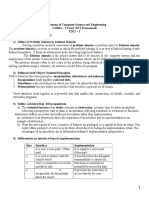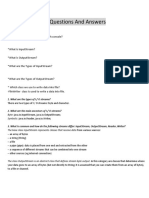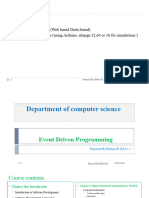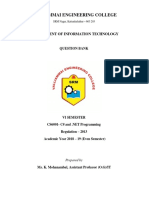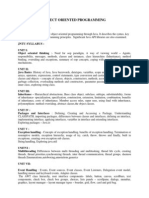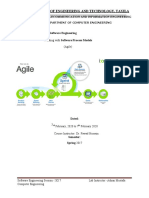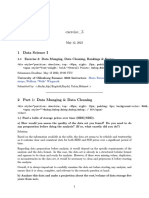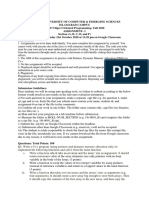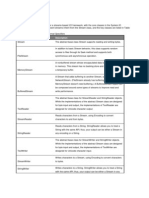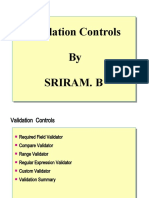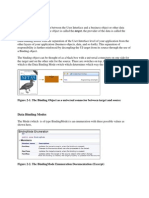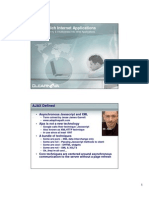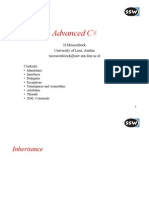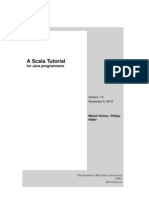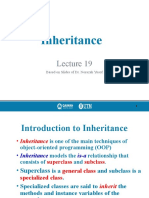0% found this document useful (0 votes)
497 views49 pagesC# File Handling and Streams Guide
This document provides an overview of working with files in C#, including:
- Using streams to perform input/output operations through classes like FileStream, StreamReader, and StreamWriter
- Manipulating files and directories with classes like File, FileInfo, Directory, and DirectoryInfo
- Key properties and methods for reading, writing, copying, deleting and moving files
Uploaded by
api-19796528Copyright
© Attribution Non-Commercial (BY-NC)
We take content rights seriously. If you suspect this is your content, claim it here.
Available Formats
Download as PPT, PDF, TXT or read online on Scribd
0% found this document useful (0 votes)
497 views49 pagesC# File Handling and Streams Guide
This document provides an overview of working with files in C#, including:
- Using streams to perform input/output operations through classes like FileStream, StreamReader, and StreamWriter
- Manipulating files and directories with classes like File, FileInfo, Directory, and DirectoryInfo
- Key properties and methods for reading, writing, copying, deleting and moving files
Uploaded by
api-19796528Copyright
© Attribution Non-Commercial (BY-NC)
We take content rights seriously. If you suspect this is your content, claim it here.
Available Formats
Download as PPT, PDF, TXT or read online on Scribd
/ 49









